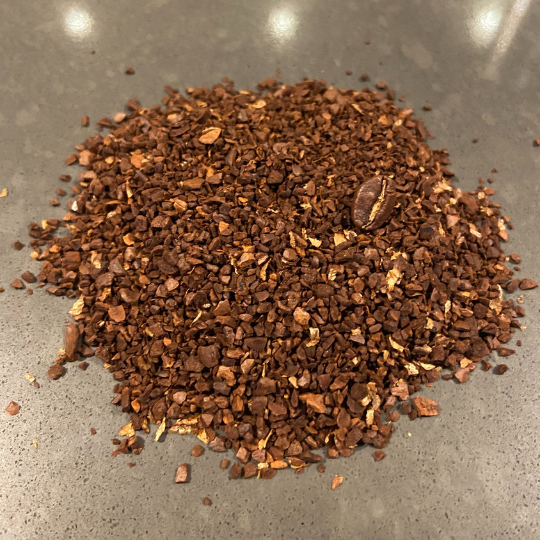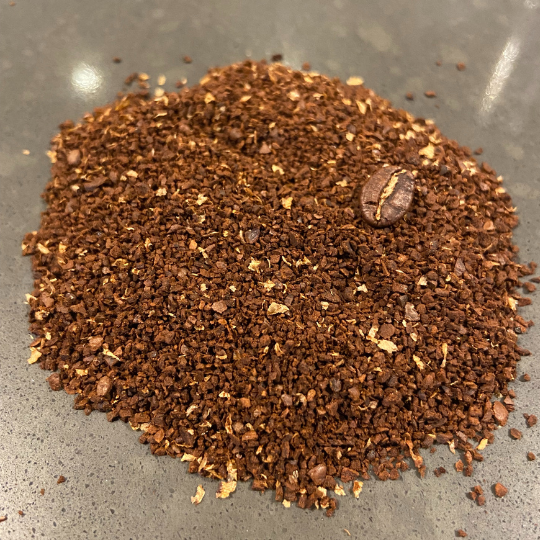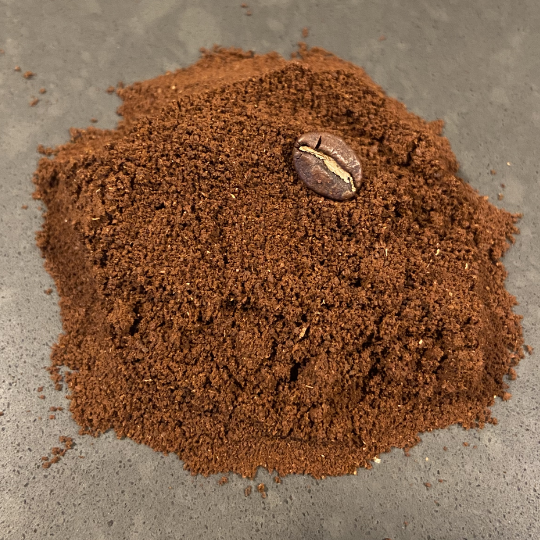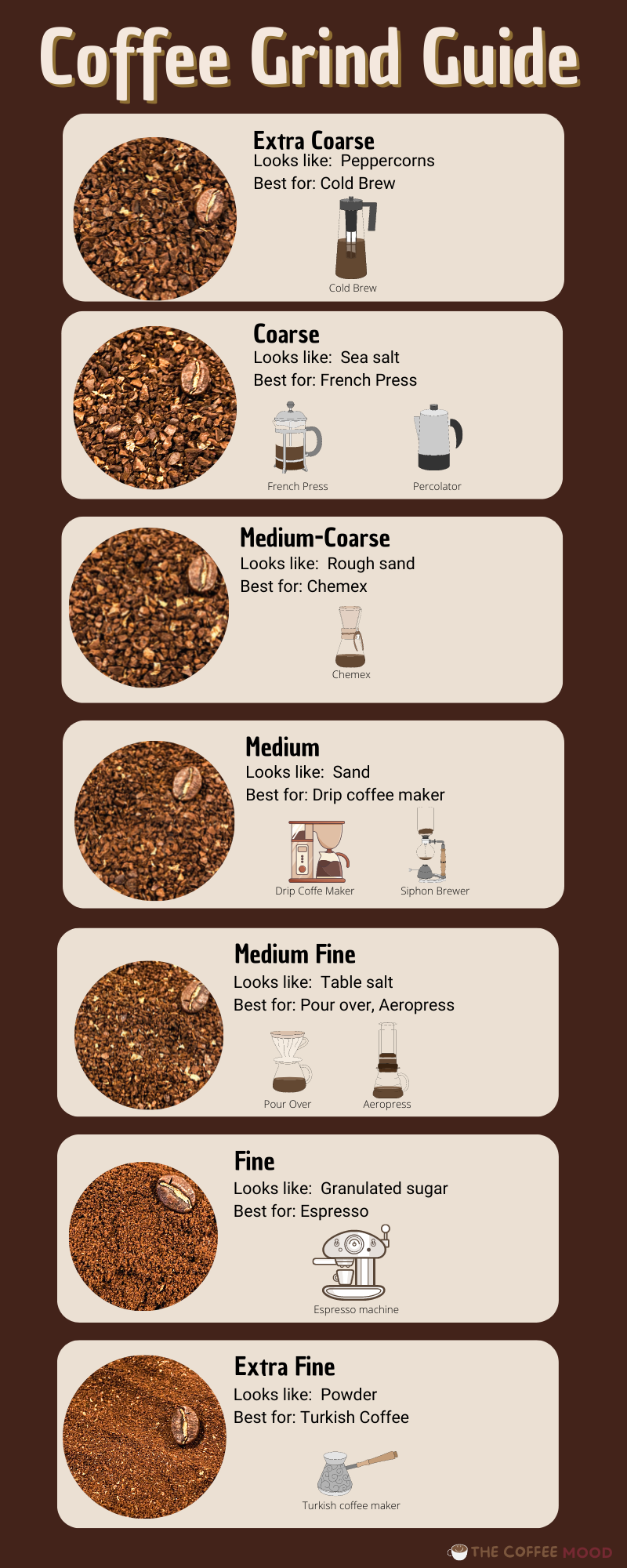If you are starting to brew coffee at home, you probably have many questions about grind size. What is the best grind size for espresso? Why do you need different grind sizes for french press vs. pour over? Why does grind size matter at all?
Getting the right grind size is incredibly important for brewing a delicious cup of coffee. While water ratio, water temperature and brew time also impact the taste of your coffee, grind size is going to make the biggest difference and it is also the hardest to get right. But we are here to help!
While finding the perfect grind size for your brewing method takes a lot of trial and error, we will provide a guide that you can use as a starting point. We will start by explaining why coffee grind size matters and how you can tell if your grind is too coarse or too fine. Then, we will tell you what the best grind size is for each brewing method. From there, you can start tweaking it to find that grind size that gets you the perfect cup of coffee!
Why should you grind beans at home?
Let’s address this question first. Why bother grinding your coffee beans at home when you can buy pre-ground coffee? By grinding your coffee beans at home you will get fresh coffee and have more flexibility to decide on the grind size you want to use.
Freshness is one of the top factors that determine the quality of your cup of coffee. You could be using the best coffee beans in the world but if they are not fresh at the moment you are brewing the coffee the result will not be as good. As soon as coffee beans are ground, they start to lose their aroma and to go stale. After just a few days these beans can end up tasting very rancid and produce low quality coffee. Grinding the coffee beans just before you brew is the best option to get the most flavor out of your coffee beans. The second reason to grind your coffee at home is that it gives you more flexibility to adapt to different brewing methods. As we will see, every brewing method requires a different size of coffee grounds.
Why does grind size matter?
To answer this question, we need to understand the coffee extraction process first. Coffee extraction is the process in which water makes contact with the ground coffee surface to extract out the flavor particles. The finer the coffee grounds, the more exposed surface area we will have and the easier it will be for water to extract the flavor compounds.
If you are keeping water ratio and extraction time constant, vary the grind size and you will get different tasting cups of coffee. The ideal grind size will give you a balanced and delicious coffee. Grind too coarse and you will end up with a watery drink. Grind too fine and your coffee will be too astringent. This is what we call under extraction and over extraction respectively.
- Under-extracted coffee has a watery texture and tastes unpleasantly sour.
- Over-extracted coffee is astringent and overwhelmingly bitter.
Another reason why grind size matters is because some brewing methods like pour over and espresso use resistance from the coffee grounds to extract the coffee. For example, grinding too fine will clog your chemex and slow down the extraction process.
The importance of getting a burr grinder
We have two options when it comes to grinders: blade grinders and burr grinder. Blade grinders are cheaper but they do not give you much control over the grind size. They do not have settings for different grind sizes. To get finer grounds with a blade grinder you need to grind for a longer time. Also, when we grind coffee beans, we are looking for uniformity. This means that ideally we want all the little pieces to be the same size. Then, the extraction process will be more uniform. This can only be achieved with a burr grinder. It doesn’t have to be an expensive one. There are some good entry level burr grinders out there under $100 and they will bring your coffee brewing game to the next level.
The 7 coffee grind sizes (with pictures)
Although your burr grinder may come with multiple grind size settings, there are seven major sizes of coffee grounds. We will describe what these sizes look like and discuss which size is best for each brewing method. For reference, we have taken a close-up picture of each grind size next to the same coffee bean.
When thinking about the best grind size for the brewing method you are using, remember that the finer you grind your beans, the faster the water will extract the flavor. This is why cold brew that takes hours to extract needs very coarse grounds but espresso that only takes 30 seconds needs fine grounds.

1. Extra Coarse Grind
These coffee grounds have a size similar to that of peppercorn. You should be able to clearly see some chunks. Extra coarse grounds will take the longest to extract which makes them perfect for cold brew. The extraction process for cold brew can take up to 24 hours, so you want to make it harder for the water to extract too much flavor from the beans to avoid over extracting.
Best for: cold brew

2. Coarse Grind
Coarse grounds will look similar to sea salt. This grind size works well with the French press. A coarse grind will allow proper extraction during the four-minute brew time for the French press. Some people tend to grind very coarse for French press brewing and end up with a watery cup of coffee. But grind too fine and your coffee will look muddy.
Best for: French press

3. Medium-Coarse Grind
Medium-coarse grounds have the texture of coarse sand. This grind size works really well with the Chemex. The Chemex needs a coarser grind compared to other pour over devices because the filter is so thick that if you go too fine the water won’t get through. Medium-coarse grinds also work with the clever dripper as it uses an immersion process similar to a French press.
Best for: Chemex

4. Medium Grind
If you are buying pre-ground coffee, you are probably getting medium grind size grounds. These coffee grounds have the texture of sand. Medium grind is the standard size for electric drip coffee makers. It will also work well with siphon brewers.
Best for: Drip coffee makers, siphon brewers

5. Medium-Fine Grind
5.Medium-Fine Grind: Medium-fine grounds have a texture like table salt. This is usually the best grind size for most pour over methods, with the exception of Chemex. This grind size will also work as a good starting point for AeroPress brewers.
Best for: Pour over, AeroPress

6. Fine Grind
This is the espresso grind. It has a very smooth texture looking like granulated sugar. You need this grind size for espresso as it will create the proper resistance for water that the espresso machine needs. It is also common to find this grind size in pre-ground coffee packages labeled as espresso grind.
Best for: Espresso

7. Extra-Fine Grind
The finest of the grind sizes has a texture similar to flour or powder. Extra-fine grind is used for Turkish coffee. This brewing method does not use filtration, the fine grounds fall to the bottom of the cup. Most coffee grinders will not be able to grind this fine. You will need a special manual Turkish coffee grinder.
Best for: Turkish coffee

Summary: Best coffee grind size for each brewing method

Trial and error
Use this grind size guide as a starting point to start brewing coffee with your chosen brew method. However, the only way to get your ideal cup of coffee is by trial and error. We have seven grind sizes in the guide but your burr grinder will probably have a lot more different setting options. Use this guide as reference and adjust as needed. Is your coffee too sour and watery? You are under-extracting, so grind finer next time. Is your coffee too bitter for your liking? Grind a little coarser next time. Of course, grind size is only one of the factors that determine the taste of your coffee. But, assuming you are getting the water ratio and extraction time correctly, then you probably have to nail the grind size.
Coffee grind size FAQ
When should you grind coffee beans?
Grind your coffee beans right before you brew for better results. Coffee beans start to lose their flavor minutes after being ground. Whole coffee beans will stay fresh for up to 3 months.
Can you grind coffee without a burr grinder?
You can use a kitchen blender or a blade grinder. However, you will get inconsistent grind sizes which will impact the taste of your cup of coffee. We recommend you invest in a burr grinder for better results.
Can roast level impact the grind size you need?
Yes, slightly. Dark roast coffee beans are less dense as they have lost more moisture during the roasting process. This makes them easier to extract so they require a slightly coarser grind size.
Now you know how essential grind size is for the quality of your coffee. Go use this guide and start tweaking your grind size to find the one that gives you the perfect cup of coffee. And always remember that the best coffee will be the one that tastes the best for you!
